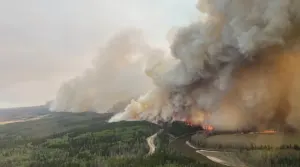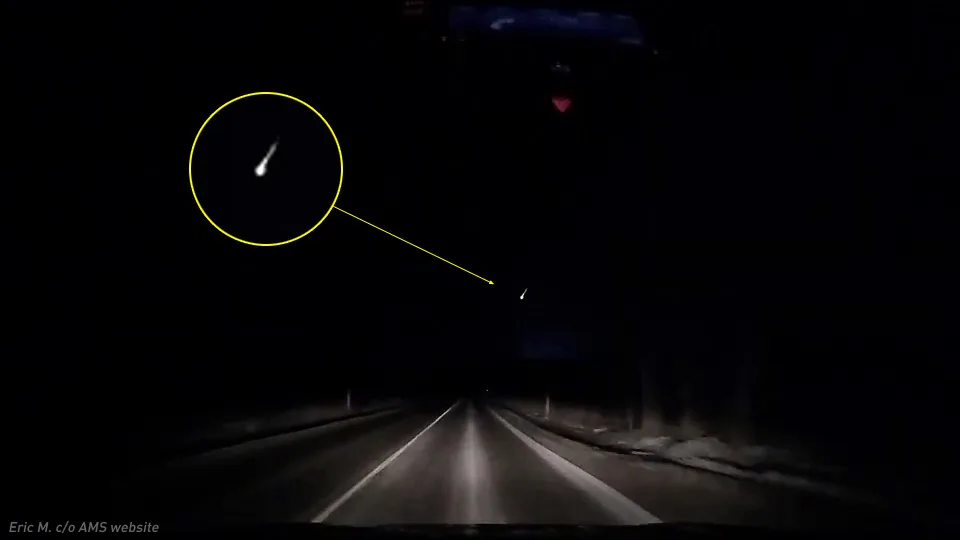
Watch a blazing fireball shatter on its plunge from space Monday night
With relatively clear skies at the time, this bright meteor was seen for hundreds of kilometres around.
A bright meteor fireball flashed through the sky early on Monday night. Did you see it?
We are fast approaching the December 14 peak of the Geminid Meteor Shower, but our night sky had a surprise for us on Monday night. At around 7:30 p.m. EST, a fireball blazed a steep 60-km long path through the air over Brockville, ON. From the edge of space down to about 35 km above the ground, this bright meteor lit up the night.
According to the American Meteor Society, over 150 witnesses reported the event — from as far away as eastern Michigan to the west, Sudbury to the north, Montreal to the east, and from Boston to Washington, DC, to the south.
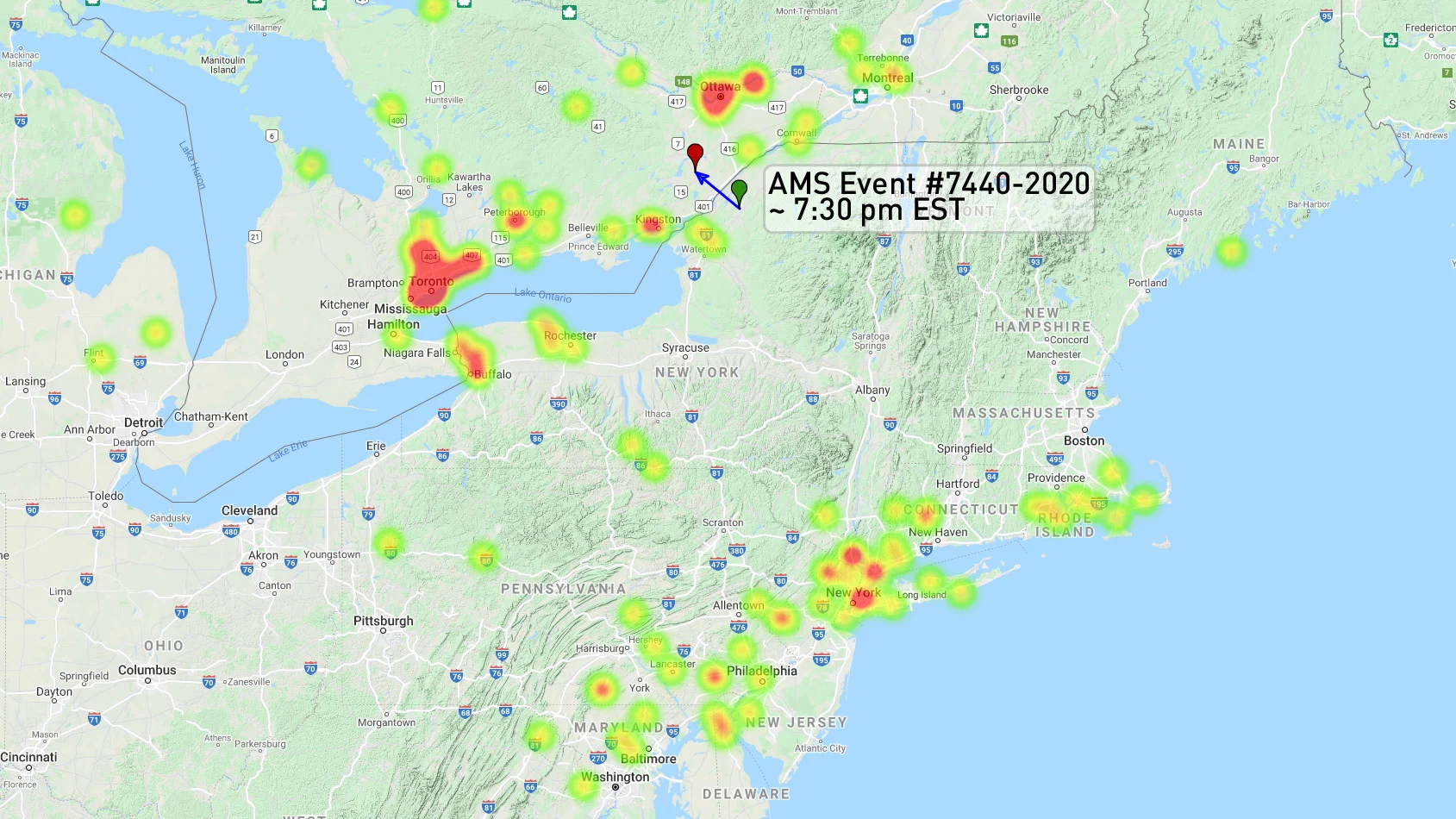
AMS map for events #7440, from Monday, December 7, 2020. Credit: American Meteor Society
According to Western University meteor scientist Denis Vida, the Brockville fireball was likely caused by a 10 kg space rock, travelling at around 50,000 km/h, as it plunged at a steep angle through the air.
Based on video footage gathered from several sources, the meteoroid broke apart into several fragments on its journey towards the ground.
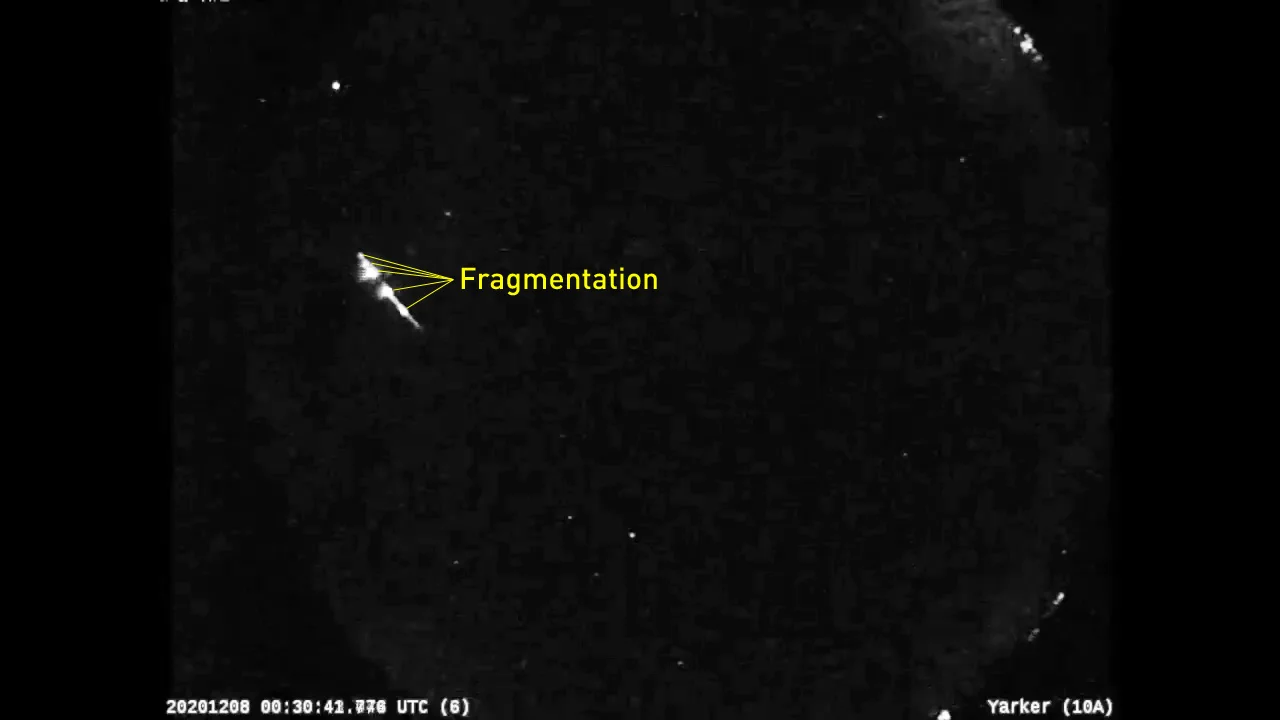
This view of the Brockville fireball, taken by an ASGARD all-sky camera located in Yarker, Ontario, shows multiple fragmentation points along the meteor's trajectory. Credit: Western Meteor Physics Group, annotations added by Scott Sutherland
Although a meteor this bright often brings hope for finding meteorites on the ground, in an email to the Weather Network, Vida expressed skepticism.
The meteoroid was certainly travelling slow enough (less than 30 km/s) for small fragments to survive. Indeed, Vida believes that several pieces, ranging from 1 to 10 grams in size, may have made it to the ground. However, at the height the rock broke up, strong winds would have had a strong influence on their trajectory towards the surface. This would make it very difficult to get a good idea of where those fragments would have fallen.
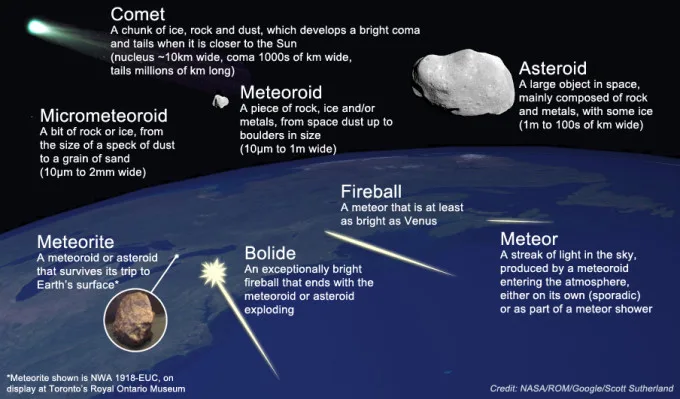
WAS THIS A GEMINID?
December 13-14 is the peak of the yearly Geminid Meteor Shower when numerous bits of 'rock comet' 3200 Phaethon can be seen streaking through the upper atmosphere. This year is especially good for the Geminids since the peak occurs on the same night as the New Moon. With no moonlight to wash out the dimmer meteors, this gives skywatchers an excellent opportunity to see this shower at its best.
Although Monday night's fireball occurred during the first week of the Geminids (which are active from December 4-20, each year), the meteoroid that caused it was actually not a piece of 3200 Phaethon!
The trajectory is the first thing that sets it apart from the Geminids. While it plunged into Earth's atmosphere at a 60-degree angle, any Geminid meteoroids would have been at a much more shallow angle. The meteor shower radiant — the point in the sky where the meteors appear to originate from — was much closer to the horizon at the time.

The Geminid meteor shower radiant at 7:30 p.m. EST on Monday, December 7, 2020. Credit: Stellarium
According to Vida, the speed of the meteoroid was the second thing that set this apart. While this space rock was travelling at 13 km/s (~50,000 km/h), Geminid meteors enter the atmosphere at more than twice that speed — 33 km/s or ~118,000 km/h.
So, if it wasn't a Geminid, what was it?
This was what meteor scientists call a 'sporadic'. It was just a random meteoroid that had been whizzing around the Sun for billions of years, minding its own business (so to speak). Then, Monday evening, it had an abrupt encounter with Earth that brought that long journey to an end.
It would be truly remarkable if, one day, that journey could be commemorated by someone finding and giving a home to one of the tiny meteorites it likely scattered on the ground.









